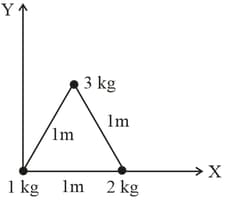The centre of mass of triangle shown in figure has coordinates
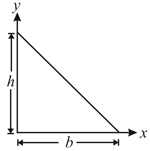


Important Questions on Centre of Mass, Momentum and Collisions
Four bodies of the equal mass start moving with the same speed as shown in the figure. In which of the following combination the centre of mass will remain at origin.
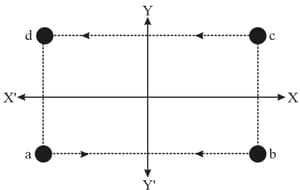
Three identical spheres, each of mass are kept as shown in the figure, touching each other with their centres on a straight line If their centres are marked respectively, the distance of the centre of mass of the system from (origin) is
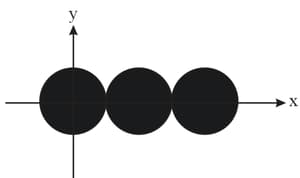
A uniform square plate has a mass of If two point masses of each are placed corners and as shown in the adjoining figure, then the centre of mass shifts to the point which lies on -
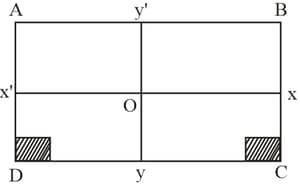
Three particles of masses and are placed at the corners of an equilateral triangle of side as shown in the figure. The coordinates of the centre of masses of the system are
